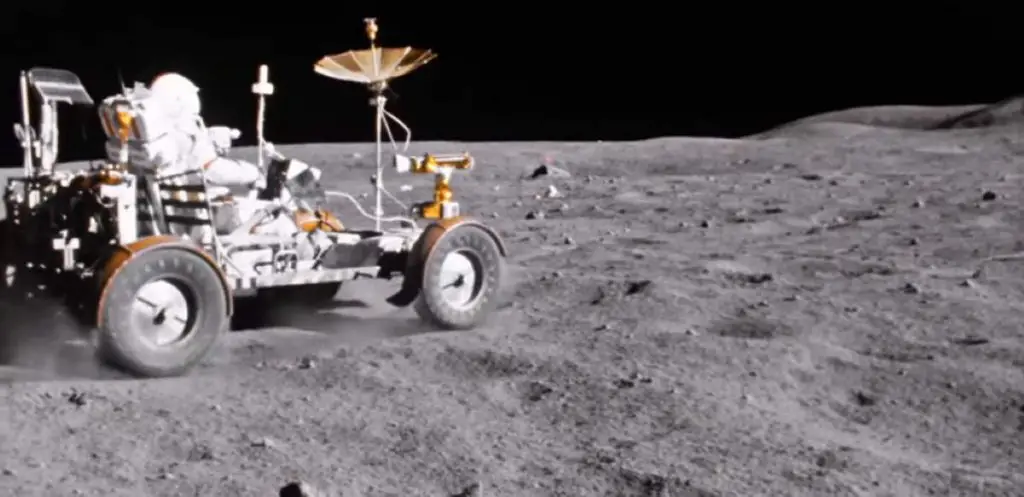In the video below, in a poetry of language unparalleled by any other, the one and only Carl Sagan talks to us about the Gift of Apollo, bringing focus and perspective to the greatest engineering achievement in human history.
The Gift of Apollo text by Carl Sagan
It’s a sultry night in July. You’ve fallen asleep in your armchair. Abruptly, you startle awake, disoriented. The television set is on, but not the sound. You strain to understand what you’re seeing. Two ghostly white figures in coveralls and helmets are softly dancing under a pitch-black sky. They make strange little skipping motions, which propel them upward amid barely perceptible clouds of dust. But something is wrong. They take too long to come down. Encumbered as they are, they seem to be flying – a little. You rub your eyes, but the dreamlike tableau persists.
Of all the events surrounding Apollo 11’s landing on the Moon on July 20, 1969, my most vivid recollection is its unreal quality. Neil Armstrong and Buzz Aldrin shuffled along the gray, dusty lunar surface, the Earth looming large in their sky, while Michael Collins, now the Moon’s own moon, orbited above them in lonely vigil.
Yes, it was an astonishing technological achievement and a triumph for the United States. Yes, the astronauts displayed death-defying courage. Yes, as Armstrong said as he first alighted, this was a historic step for the human species. But if you turned off the byplay between Mission Control and the Sea of Tranquility, with its deliberately mundane and routine chatter, and stared into that black-and-white television monitor, you could glimpse that we humans had entered the realm of myth and legend.

Once upon a time, we soared into the solar system. For a few years. Then we hurried back. Why? What happened? What was Apollo really about?
Apollo conveyed a confidence, energy, and breadth of vision that did capture the imagination of the world. That too was part of its purpose. It inspired an optimism about technology and an enthusiasm for the future. If we could fly to the Moon, as so many asked, what else were we capable of?
We may have found that perspective just in time, just as our technology threatens the habitability of our world. Whatever the reason we first mustered the Apollo program, however mired it was in Cold War nationalism and the instruments of death, the inescapable recognition of the unity and fragility of Earth is its clear and luminous dividend, the unexpected final gift of Apollo.
From Carl Sagan, Pale Blue Dot: A Vision of the Human Future in Space
Sources
- “The Gift of Apollo” on the Planetary Society website
- Budget of NASA, Year by Year [1980-1989] - June 10, 2024
- Budget of NASA, Year by Year [1970-1979] - June 10, 2024
- Budget of NASA, Year by Year [1958-2024] - June 10, 2024

